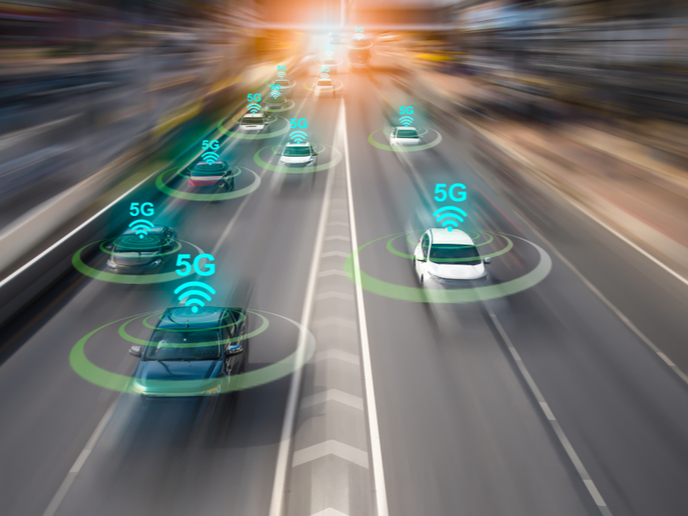Tackling the challenges of cross-border connectivity for Europe’s vehicles
Connected and fully automated vehicles are set to revolutionise transportation as we know it. Thanks to 5G-enabled vehicle-to-everything (V2X) communication, which makes it possible for vehicles to communicate with one another and their surroundings, we can look forward to a future with safer roads and more efficient traffic. However, there is still work to be done at border crossings that could create coverage black spots compromising safety and efficiency. To advance seamless network handovers across Europe’s many borders, the EU-funded 5G-ROUTES project will be carrying out large-scale V2X field tests across an important 5G cross-border corridor (Via Baltica) that spans three EU countries: Estonia, Latvia and Finland. In the meantime, the project has just completed its first V2X use case demonstrations on a racetrack in Latvia, using a 5G mobile network that imitates the challenges of cross-border connectivity.
A safe testbed
“The biggest challenge in testing innovations over the 5G network in a cross-border setting is finding a safe environment that enables undisturbed testing in realistic conditions. Thus, a closed and safe cross-border testing space significantly alleviates this hurdle, facilitating testing on a wider scale and massively accelerating the development of innovative cross-border solutions in all industries, including smart mobility,” observes Mobility Innovation Lead Artūrs Lindenbergs of Latvian mobile telecommunications operator and 5G-ROUTES project partner LMT in a news item posted on ‘Traffic Technology Today’. The racetrack chosen as the project’s 5G testbed is the Bikernieki racetrack in Riga. There, 5G-ROUTES project partners demonstrated four cross-border connectivity use cases. The use case demonstrated by the Latvian Institute of Electronics and Computer Science was dynamic vehicle platooning – where vehicles form a group travelling together and very close to each other using data sent and received over a 5G network. Platooning aims to increase the capacity of roads by decreasing the distances between cars and trucks, and making it possible for them to accelerate or brake simultaneously – something that cannot be safely done with human drivers. The VEDECOM Institute – a sustainable mobility research and training organisation based in France – and Estonia’s Tallinn University of Technology showcased two interconnected use cases: vulnerable road user (VRU) collision avoidance and connected maintenance. In the VRU collision avoidance demo, a connected electric vehicle sent alerts to a pedestrian, warning them of a potential collision and, as reported in the news item, providing them with “crucial seconds to remove themselves from danger.” The 5G-ROUTES partners were able to test cross-border connectivity by having the VRU and electric vehicle connected to different mobile operators. Connected maintenance involves the use of predictive analytics and data collected from sensors to enable long-term maintenance and repair services throughout a vehicle’s lifetime. The fourth use case demonstrated by Spanish project partner Brainstorm Multimedia involved multiuser gaming on the go. The demo tested multiplayer gameplay with gamers connected via a 5G-enabled smartphone and a laptop, showcasing the capabilities of a 5G non-standalone network – where a 5G network is deployed based on existing 4G network facilities. 5G-ROUTES (5th Generation connected and automated mobility cross-border EU trials) is coordinated by ICT provider Ericsson Estonia. The 4-year project ends in August 2024. For more information, please see: 5G-ROUTES project website
Keywords
5G-ROUTES, 5G, network, V2X, cross-border connectivity, mobility, connected, electric vehicle



